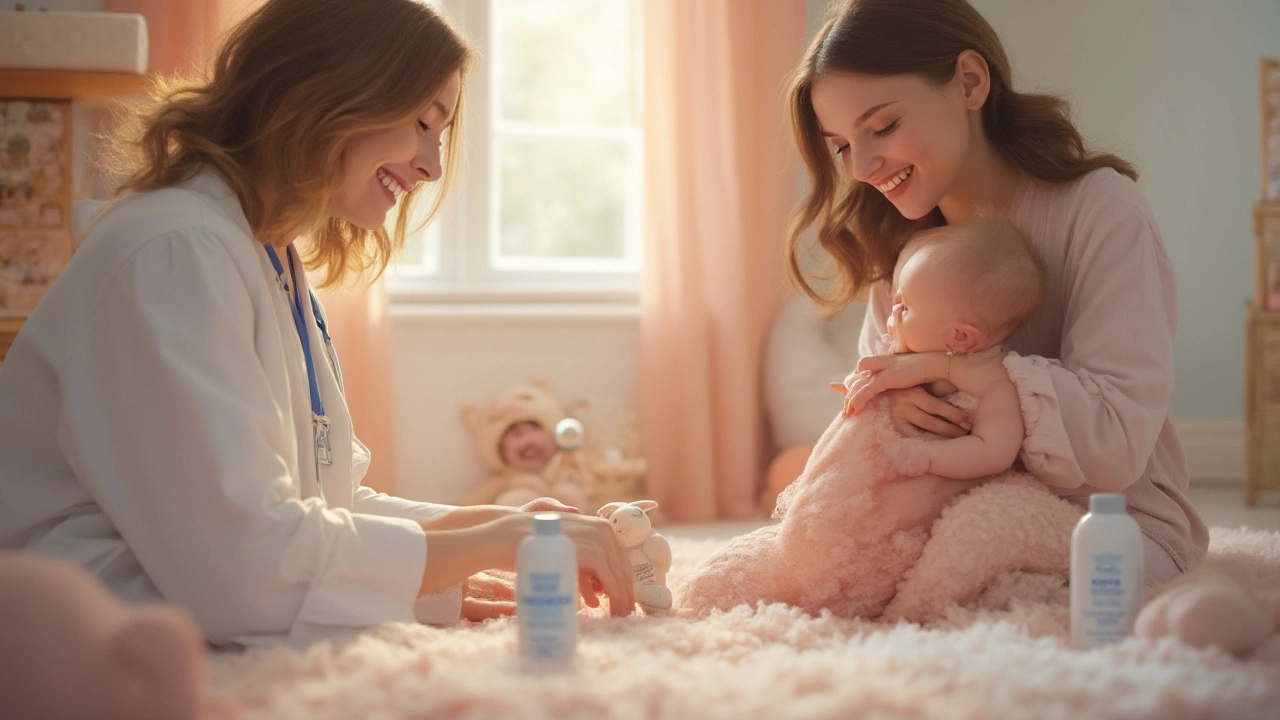Baby Rash Prevention: Easy Steps for Happy, Healthy Skin
If you’ve ever changed a diaper only to see a red spot appear, you know how frustrating baby rashes can be. The good news? Most of them are preventable with a few simple habits. Below are practical tips you can start using right now.
Keep the Area Clean and Dry
Every diaper change is an opportunity to protect your baby's skin. Use warm water and a soft, fragrance‑free wipe or cloth—avoid harsh wipes that contain alcohol or perfume. Pat the area dry instead of rubbing; moisture left on the skin creates a perfect breeding ground for irritation.
Choose Breathable Diapers and Clothing
Not all diapers are created equal. Look for ones with a breathable outer layer and a super‑absorbent core that pulls wetness away from the skin. Cotton or bamboo cloth diapers work well too, but be sure they fit snugly without squeezing.
Clothing matters as much as the diaper. Dress your baby in loose, natural‑fiber outfits—cotton onesies and leggings let air circulate and reduce friction.
Use a Protective Barrier Cream
A thin layer of zinc oxide or petroleum jelly after each change creates a shield that keeps moisture out. Apply it only when the skin is completely dry; too much can trap heat, which isn’t helpful.
If your baby’s skin seems extra sensitive, try a fragrance‑free, hypoallergenic cream designed for newborns.
Give Some Air Time
Every few hours, let your baby go diaper‑free for 10–15 minutes. Lay them on a towel or a breathable pad and let the skin breathe. This simple step can cut down on redness dramatically.
Laundry Tips That Matter
Wash cloth diapers, wipes, and any reusable blankets in a gentle, dye‑free detergent. Avoid fabric softeners—they leave residues that can irritate delicate skin.
If you use powder or liquid laundry boosters, rinse thoroughly; leftover chemicals often cause rashes.
Watch Out for Food Triggers
When babies start solid foods, acidic fruits like oranges or tomatoes can sometimes show up as a rash in the diaper area. Keep a food diary if you notice patterns and talk to your pediatrician about safe alternatives.
Allergies aren’t always obvious, so be patient—sometimes it takes a few weeks to see what truly bothers your baby.
When to Call the Doctor
A mild rash usually clears up in a day or two with proper care. If you see swelling, blisters, fever, or the rash spreads beyond the diaper zone, get professional advice fast.
Early treatment can prevent infections and keep your baby comfortable.
Baby rash prevention is all about consistency—cleaning well, keeping skin dry, using barrier creams, choosing breathable gear, and giving some air time. Stick to these habits and you’ll see fewer red spots, happier diaper changes, and a more relaxed parent.

Infant Fungal Rashes: Expert Skin Care and Prevention Guide
Explore dermatologist-approved routines to treat and prevent recurring fungal rashes in infants. Discover actionable tips, facts, and effective products for long-term baby skin health.